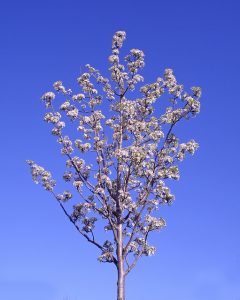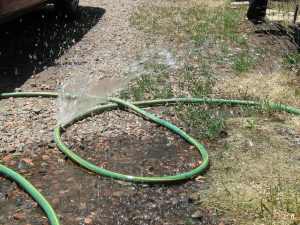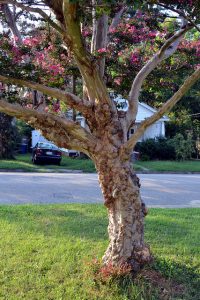If you have recently planted a tree, you know that it will likely go through some sort of “ugly” period – a time when the tree doesn’t look its best because it has just gone through something truly traumatic. While this is fairly normal, there are some things that you have to be on the lookout for once your tree has been established. The biggest things you need to look at to tell the health of the tree are the color of the leaves and how healthy they appear. If the leaves are turning brown or they are wilting, it is a sign that something may be wrong with your new tree.
Don’t be alarmed – this doesn’t mean that your tree isn’t healthy or that it won’t make it. Instead, it could just be a sign that something isn’t going quite right to make your tree happy in its new home. Acting quickly and with the appropriate response should have your tree looking as good as new.
If you notice that your newly planted tree is wilting and/or turning brown, here are some tips to make it better:
4. It Could Be Transplant Shock
- “Wait and see” approach
- Do not over or under water the tree
- Check daily for any other signs of distress
If your tree is freshly planted, this is just a sign of transplant shock. This is a normal occurrence because your tree has just gone through something quite stressful. The best thing you can do during this time is to just wait it out, according to Thought Co. The more you play around with the tree or poke at it, the deeper in shock it can go.
Instead, follow all of the care methodology steps and let your tree have some time to adjust. Just like a freshman in college or someone learning how to drive, eventually the tree will settle down and everything will feel normal.
However, transplant shock really shouldn’t last all that long. Each tree will have a different time, but it should look better as the weeks go by – if it doesn’t, call a professional.
3. Stop Watering So Much
- Do not saturate the ground
- Take rainfall into account
- Back off if you notice situation getting worse
Many people water their trees thinking that there is no such thing as overwatering, but they’d be wrong. Especially when you have a new tree, putting too much water into the ground can almost waterlog the tree and cause it to stop getting the nutrients it needs.
Den Garden explains: “The roots wick up the water to the plant body. The plant cells fill up, one by one, and attempt to pass the liquid on to the next cell by osmosis. This system works wonderfully until the moisture reaches the cells located at the end of the line. These cells have no place to pass excessive moisture on to, so they continue to fill until they burst, creating crusty brown tips on the edges of the leaves.”
Examine your leaves to see if this could possibly be the problem with your tree. If it is, step away from watering for a few weeks and see if you see a change in the leaves.
2. Check Your Soil
- Ensure soil is healthy enough to grow trees
- Acidity levels are important
- Fertilizer MAY help
As your tree is moved, it can go through a different adjustment period. One of the reasons your tree doesn’t adjust well is because it isn’t used to the soil in you have planted it. Soil conditions have been known to make transplant shock worse.
If the soil around a tree is too soggy, it won’t be able to get oxygen to the roots, according to Teleflora. The roots either don’t grow at all or they aren’t allowed to grow strong enough to really support your tree in its new home. Eventually, the root systems will start to fail. Even worse, it can lead to another problem called leaf scorch.
Other problems with the soil include too much heat, over tilling, over watering, and bad fertilizer.
1. It May Have a Disease
- Look for common symptoms of problems
- Make sure to buy from reputable sources
- Make sure your yard is safe before planting
When you buy a new tree, even if it is from a reputable source, there is a chance that you are going to introduce a new disease or pest into your yard. No nursery or tree center is perfect and sometimes the trees do get sick. If your tree is having problems with browning leaves or wilting, it might just be that you picked a bum tree.
Make sure to give your tree some time to establish itself, but always be on the lookout for other signs of problems. If you brought an infestation into your yard, it won’t be long before it spreads to other trees. The Organic Gardener’s Handbook of Natural Insect and Disease Control has some great tips on how to prevent diseases from spreading.
In some cases, getting the opinion of a professional may help you to determine whether your tree is struggling because of something in your yard or because it was sick when you purchased it. Most reputable nurseries do have a warranty on their products.
At Econo Tree Service, our goal is to help people put more trees into their yard AND to keep those trees as healthy as can be. We work to ensure that your trees have a great transition process so that they can grow tall and strong. If you have any questions about selecting, planting, or taking care of a new tree for your yard, give us a call today.
Our team is prepared to handle any stage of the tree growing process, from the very first days to the very last. No matter what you need or what questions you have, we are here to answer them.
Give us a call today at (650) 200-2495.
Header photo courtesy of Davide Restivo on Flickr!





